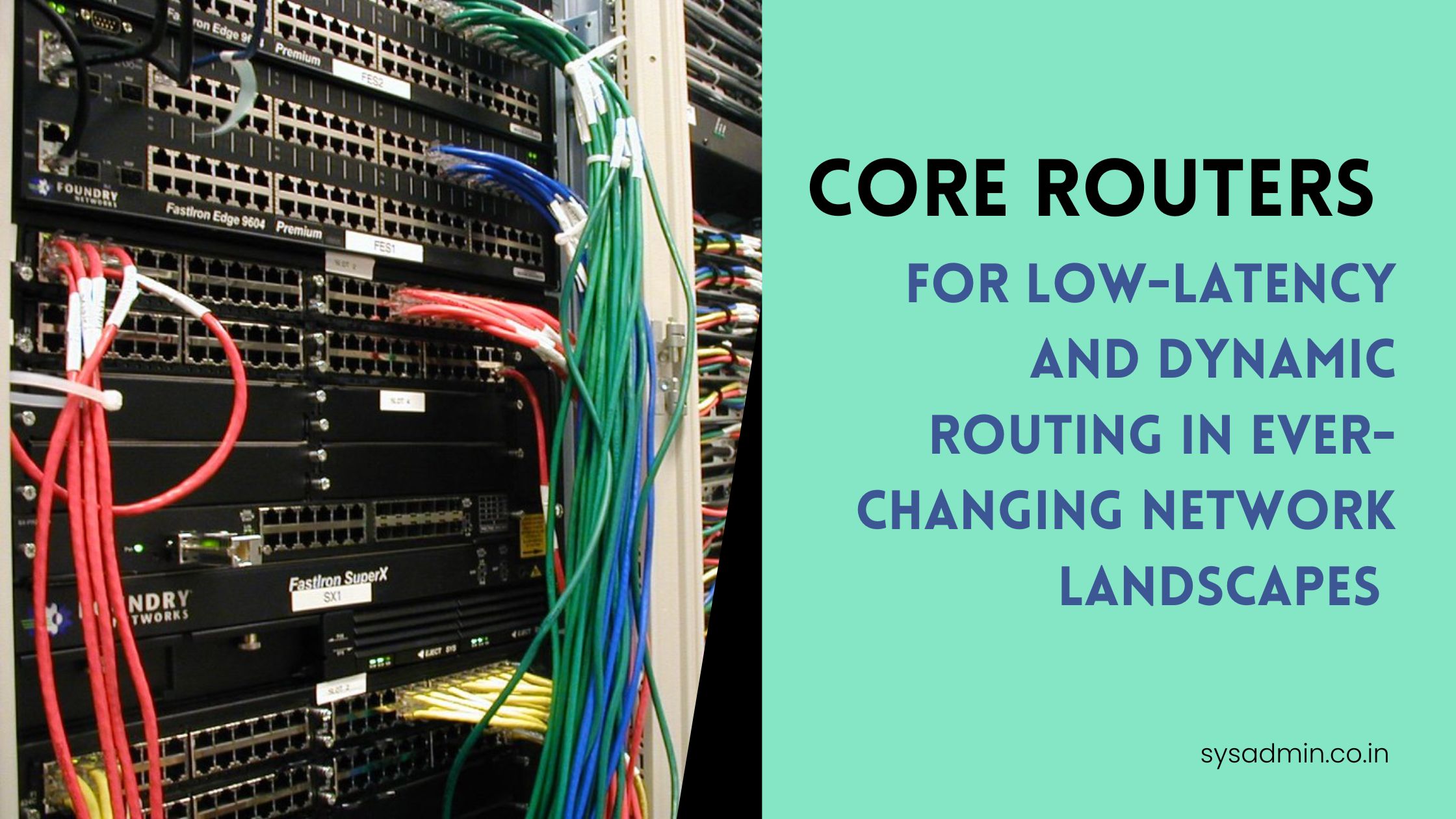Creating a dynamic routing system in an environment with very low latency requirements and fast-changing network conditions necessitates the strategic deployment of core routers.
These sophisticated networking devices play a pivotal role in adapting to the dynamic nature of the network and ensuring rapid data transmission. Here’s how core routers can be employed to meet the demanding needs of such an environment:
Real-Time Path Optimization:
Core routers utilize advanced algorithms to continuously evaluate network conditions. In an environment with low latency requirements, these algorithms dynamically optimize data paths in real-time. By assessing factors like traffic load, bandwidth availability, and network congestion, core routers can intelligently reroute data to the fastest and most reliable paths, minimizing latency.
Subnet and Traffic Prioritization:
To meet low latency demands, core routers can implement subnet prioritization and quality of service (QoS) policies. By assigning priority levels to specific types of traffic or critical applications, the router ensures that time-sensitive data receives preferential treatment.
This capability is crucial in meeting the stringent latency requirements of applications such as online gaming, financial transactions, or real-time communication.
Fast Convergence Protocols:
Core routers in dynamic environments employ fast convergence protocols to quickly adapt to network topology changes. In the event of a link failure or a network device going offline, these routers swiftly update routing tables and reroute traffic through alternative paths.
This agility ensures minimal disruption and contributes to meeting low-latency goals.
Adaptive Load Balancing:
Core routers play a key role in distributing network traffic efficiently. In a dynamic environment, they employ adaptive load balancing techniques, considering factors like link utilization and response times. By dynamically distributing the load across available paths, core routers prevent congestion and optimize the use of network resources.
Network Monitoring and Predictive Analysis:
Core routers continuously monitor network conditions and leverage predictive analysis. By anticipating potential issues based on historical data and current trends, these routers can proactively adjust routing strategies.
This proactive approach enhances network stability and responsiveness, critical in environments with fast-changing conditions.
Telemetry and Reporting:
Advanced core routers provide telemetry data and detailed reporting on network performance. Administrators can use this information to gain insights into network behaviour, identify potential bottlenecks, and fine-tune routing parameters.
This data-driven approach is essential for maintaining optimal network performance in a dynamically changing environment.
In essence, core routers become the linchpin in crafting a dynamic routing system tailored for low-latency environments. Their ability to adapt, optimize, and respond swiftly to changing conditions ensures that the network remains resilient and meets the demanding requirements of applications where every millisecond counts.
